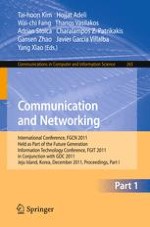2012 | Buch
Communication and Networking
International Conference, FGCN 2011, Held as Part of the Future Generation Information Technology Conference, FGIT 2011, in Conjunction with GDC 2011, Jeju Island, Korea, December 8-10, 2011. Proceedings, Part I
herausgegeben von: Tai-hoon Kim, Hojjat Adeli, Wai-chi Fang, Thanos Vasilakos, Adrian Stoica, Charalampos Z. Patrikakis, Gansen Zhao, Javier García Villalba, Yang Xiao
Verlag: Springer Berlin Heidelberg
Buchreihe : Communications in Computer and Information Science
